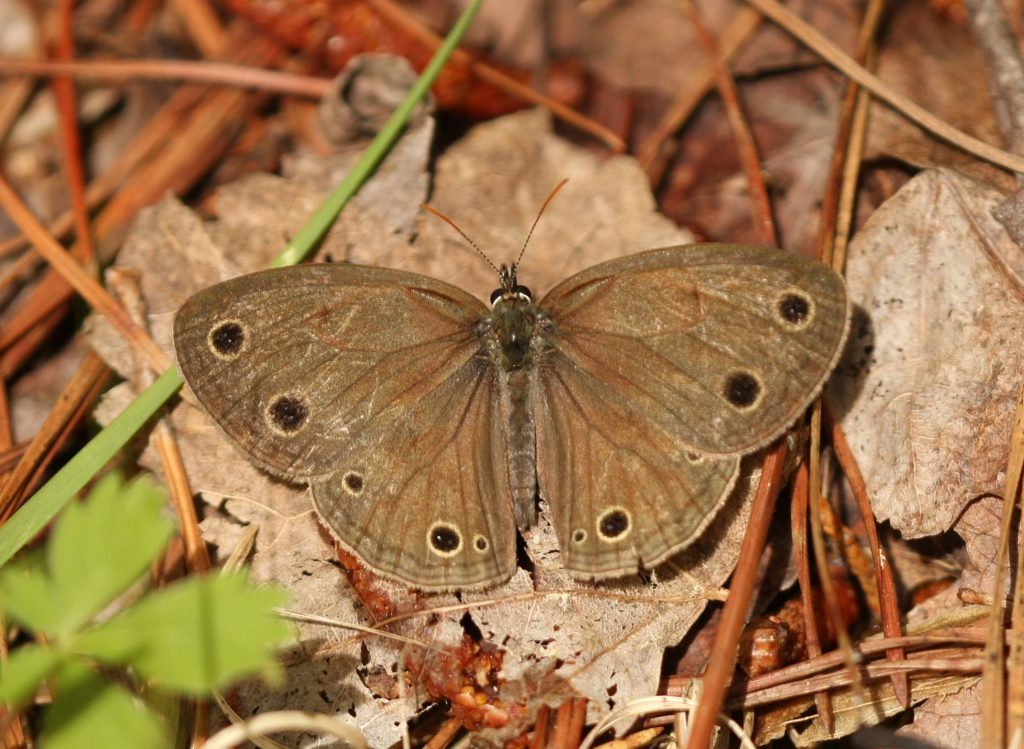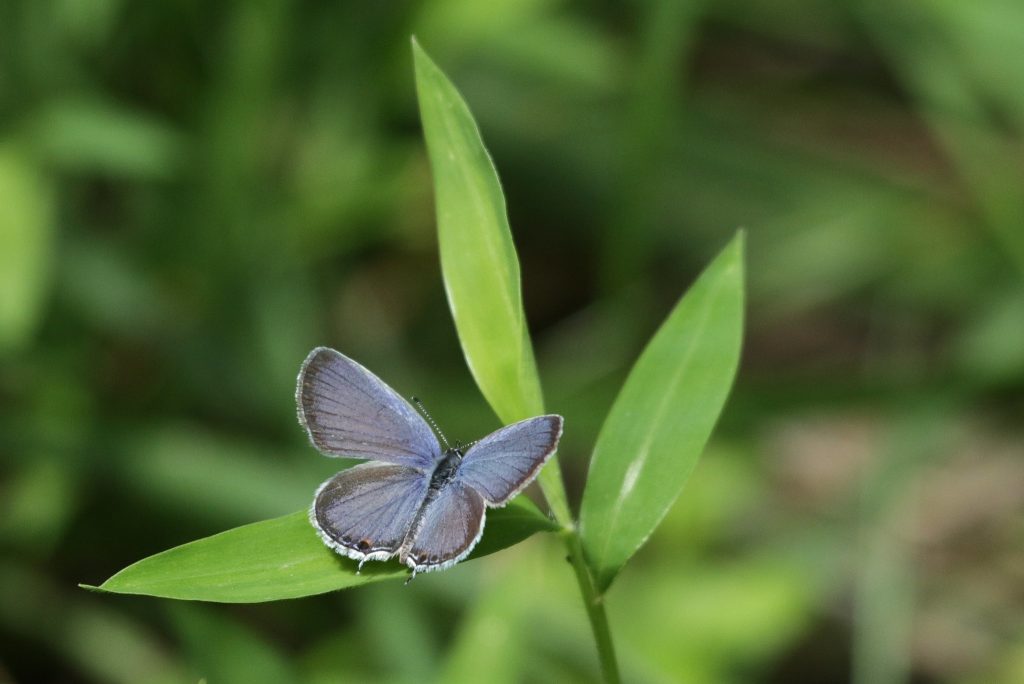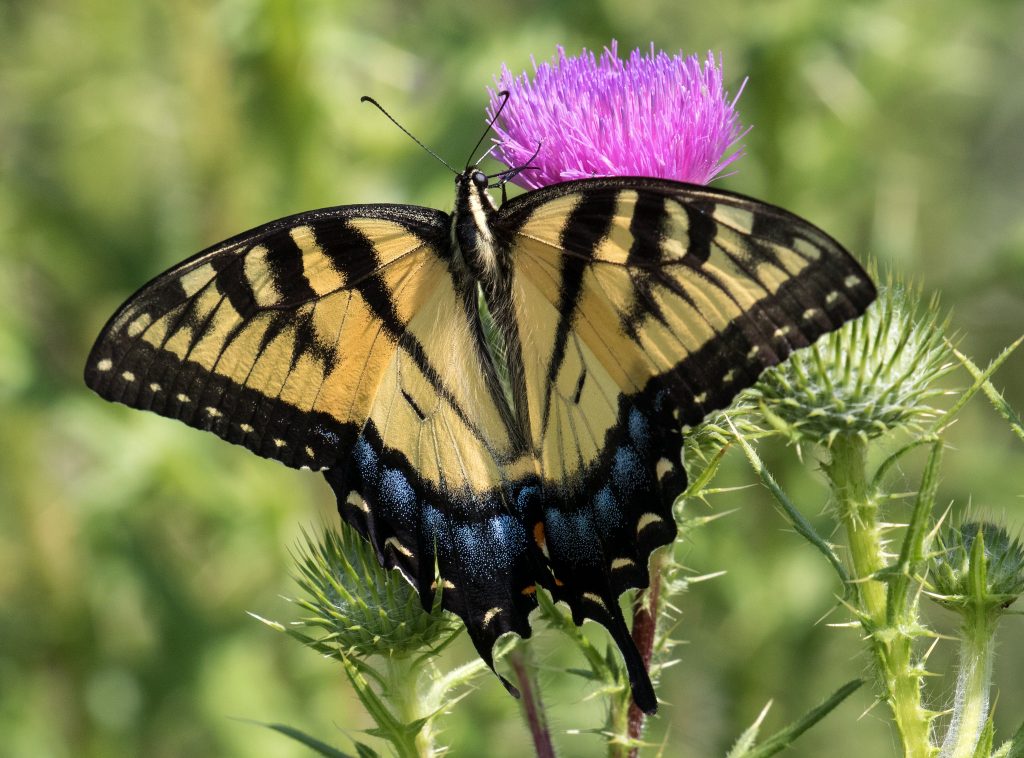High Flyers: Butterflies in Great Parks
Those beautiful flyers everyone loves to see visiting their garden, butterflies are one of the prime examples of a beneficial bug. In the Cincinnati area, we have just over 100 different species that have been observed, so you might be surprised what you find if you’re out and about! From planting host plants in order to attract butterflies to lay eggs, to good flowers for nectaring, I’m going to talk a little about where you can find some of these stunning bugs!
Butterflies to Look for …
The Mimic & the Mimicked


Left: Monarch Butterfly by Flickr user Peter Miller (CC BY-NC-ND 2.0); right: Viceroy, courtesy U.S. Fish and Wildlife Service, Midwest Region/Alejandro Morales.
We all know the classic monarch butterfly (Danaus plexippus), but it has a look alike you may have miss-identified before! Viceroy (Limenitis archippus) are a neat mimic that can be found throughout the late summer and early fall, and can be distinguished from the monarch by its smaller size as well as a line that goes through the middle of the hindwing.
Viceroy host on willows, poplars and cottonwoods, while monarchs host on various species of milkweed. Both are partial to meadows, marshes and swamplands, so be on the lookout for these guys in parks like Otto Armleder Memorial Park and Miami Whitewater Forest.
The Extravagantly Named


Left: Great Spangled Fritillary by Flickr user pop.uw23; right: spicebush swallowtail by Flickr user abbeyprivate.
Butterflies aren’t just known for their amazing beauty, they’re also known for having some extravagant names. The great spangled fritillary (Speyeria cybele) and spicebush swallowtail (Papilio troilus) are great examples of living up to both of those standards!
Great spangled fritillary host caterpillars on various types of violet. Meanwhile, spicebush swallowtail primarily hosts on northern spicebush (like its names implies), but are also known to host on sassafras and tulip trees! You can find both of these amazing butterflies around forest edges. Parks like Mitchell Memorial Forest, Glenwood Gardens and Woodland Mound are all great places to start.
The Mythical Woodland Flyers


Left: Little Wood Satyr by Flickr user John Flannery (CC BY-ND 2.0); right: Common Wood Nymph – Cercyonus pegala by Flickr user Judy Gallagher (CC BY 2.0).
Two of my favorite butterflies are the little wood satyr (Megisto cymela) and the common wood nymph (Cercyonis pegala)! These somewhat bland-looking butterflies can be found in woodlands and shrubbier areas. Look for their bouncy flying pattern as they weave around leaves and branches.
Little wood satyr primarily lay their eggs on grasses – Kentucky bluegrass, little bluestem and orchard grass are some common hosts, just to name a few. Common wood nymphs prefer butterfly weed, thistle and wild bergamot. Both of these species are pretty neat for butterflies because a big portion of their diet comes from tree sap and decaying matter! Look around places like Lake Isabella, Miami Whitewater Forest, Winton Woods and Shawnee Lookout for these cool woodland critters!
The Micro-Flyers


Left: Eastern Tailed Blue by Flickr user In2Nature; right: Least Skipper by Flickr user Matt Tillett (CC BY 2.0).
When we think of butterflies, we often go to the large ones we see at butterfly exhibits or at museums, but those are more often the exception than the rule; most butterflies are actually around 1 inch in length! Two tiny flyers to be on the lookout for are eastern tailed blue (Cupido comyntas) and least skippers (Ancyloxypha numitor). Least skippers and eastern tailed blues are the eighth and ninth smallest butterflies in the world, respectively. Not getting much bigger than 1 inch in size, these butterflies are micro beauties!
Eastern tailed blues host on species of legumes, things like clover and vetches. Contrastingly, least skippers prefer plants like tall grasses and Kentucky bluegrass. Both of these guys can be found in just about any park and likely your neighborhood as well!
The Rare But Unremarkable


Left: Horace’s Duskywing by Flickr user Alan Schmierer; right: Hayhurst’s Scallopwing – Staphylus hayhurstii by Flickr user Judy Gallagher (CC BY 2.0).
Not all butterflies can be stunningly beautiful or neatly patterned. Sometimes, they’re just neat because they’re not very common. Horace’s duskywing (Erynnis horatius) and Hayhurst’s scallopwing (Staphylus hayhurstii) are two such butterflies. While these little guys are pretty unexciting to look at, if you meet someone who loves butterflies, they would be ecstatic to find one of these in their backyard!
Horace’s duskywing are very specialized for native plants, liking plants such as dogbane, buttonbush and goldenrod, and laying their eggs on most species of white or red oak. Hayhurst’s scallopwing are riparian specialists, meaning they almost exclusively stick to areas close to rivers. They lay their eggs on plants known as lamb’s quarters or goosefoots. Look for both of these uncommon butterflies at Shaker Trace Wetlands at Miami Whitewater Forest, Shawnee Lookout and Woodland Mound!
The Large & in Charge


Left: Giant Swallowtail Butterfly courtesy U.S. Fish and Wildlife Service, Midwest Region/Grayson Smith; right: Eastern Tiger Swallowtail by Flickr user ksblack99.
Some butterflies defy the odds in size and exhibit amazing size. Giant swallowtails (Papilio cresphontes) and eastern tiger swallowtails (Papilio glaucus) are two of the largest butterflies you can find in Cincinnati! Giant swallowtails are a sleek black with a dissected V of yellow across their wings. These amazing butterflies can reach wingspans of up to 7.5 inches! Eastern tiger swallowtails are a bit smaller, only capping out at about a 5.5 inch wingspan. The giant swallowtail is called giant for a reason, after all!
Eastern tiger swallowtails will lay their eggs on plants like tulip trees, black cherry trees, cottonwood and willows. Giant swallowtails almost exclusively lay their eggs on citrus plants. In our area, one such plant giant swallowtails visit is the wafer ash. Giant swallowtail caterpillars also use camouflage in a unique way: Rather than trying to blend into be a leaf or a twig, they try to look like bird poop! Look for giant swallowtails at Miami Whitewater Forest, and Winton Woods, and look for eastern tiger swallowtails at just about any park in the county.
The Ones in Your Backyard
You may be looking at all these butterflies and thinking that you don’t have the time to run around and look for all of them. Well, there are a few great ways you can encourage some of them to come to your yard!
The first way is probably the most time consuming and that’s by planting native plants. Many non-native plants and big-box cultivars offer lower quality nectar for insects. Instead of planting that begonia, think about maybe trying something like purple coneflower, scarlet catchfly or goldenrod. Having a good variety in the colors of your flowers also helps, as some species feed heavily on white flowers, some on yellow, and some are generalists. You just have to figure out what kind of mix you like!
Another option – if you don’t have time to change out your entire flowerbed this year, but would still like to see some cool stuff – is to simply leave fruit leftovers outside, like a watermelon rind. The sugary water and the little bit of the red fruit that’s usually left on a watermelon makes for a good pick-me-up for insects. You’ll likely get a few hundred flies for every couple of butterflies though. This will also attract all sorts of other neat insects to your yard as well, things like hummingbird moths and certain hornet species may end up stopping by! A great way to learn about these bugs is to download the iNaturalist app and take pictures as you’re out and about.
I hope that you take the time to learn a little bit about these winged wonders and maybe go out looking for a few!
—
Luke Thies
Nature Interpreter, Miami Whitewater Forest
